- Skip to main content
- Skip to primary sidebar
- Skip to footer
The Boat Galley
making boat life better
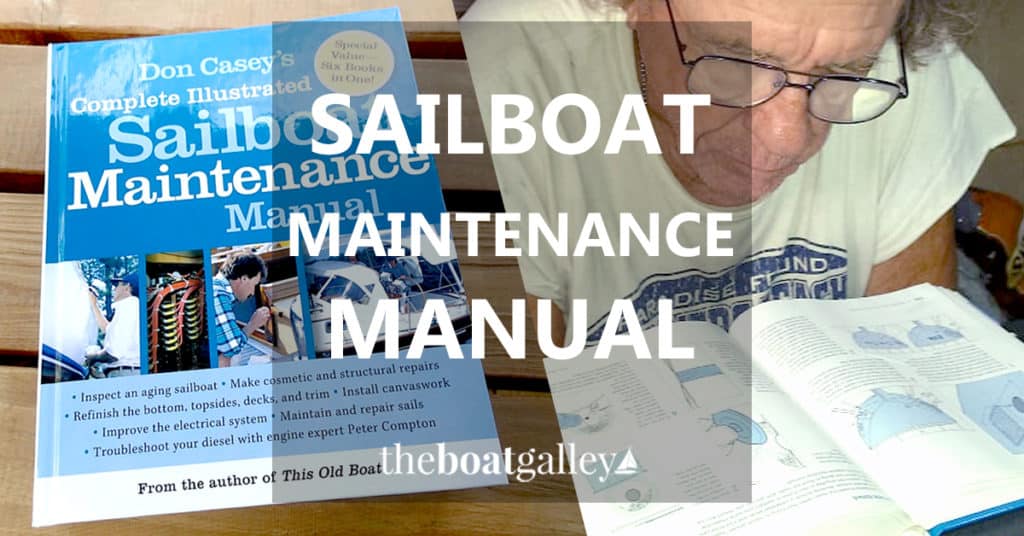

Sailboat Maintenance Manual
Published on May 18, 2014 ; last updated on October 28, 2020 by Carolyn Shearlock
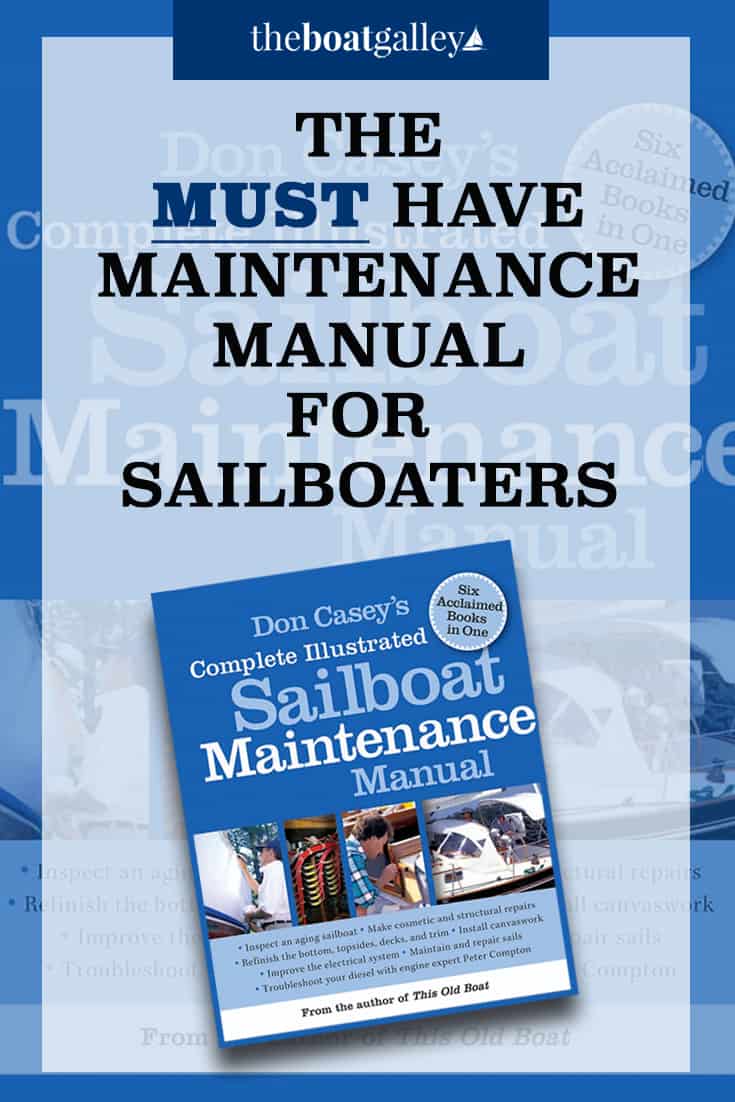
I’ve always loved Don Casey’s boat books, and his Complete Illustrated Sailboat Maintenance Manual is no exception.
I’ll get into what’s covered in the book in a minute, but the big thing to know is that his books are wonderful for any topics where you find yourself feeling totally lost. He doesn’t assume that you already are familiar with a system. He tells you what to look for, why you should care and what various things are telling you.
He leads you through troubleshooting in a step-by-step fashion and provides basic definitions of terms you may be unfamiliar with. In short, his books are understandable for the newbie, yet give sufficient detail for identifying and fixing problems. Further, his liberal use illustrations really helps me — and they’re usually large enough to see what’s being shown without resorting to a magnifying glass.
Simply put, Don Casey makes you feel like you can understand your boat and its systems and that you can tackle most problems.
We used his Boat Electrics Simplified extensively on Que Tal and found that it often allowed us to solve a problem or if not, that it provided enough basic information that we could then understand more advanced information in another book. We had three different “electric” books on board, and it was always the one I’d reach for first.
A little over a week ago, I received a review/boatwarming copy of Complete Illustrated Sailboat Maintenance Manual from International Marine. Full disclosure: they are the publishers of The Boat Galley Cookbook, too, and I’m one of their blogger/reviewers.
Don Casey’s Complete Illustrated Sailboat Maintenance Manual includes 5 of his other books plus one by Peter Compton on diesel engines. There is no new material in this book — important to know if you already own several of the included books. But if you don’t already own several, this book is both a space and money saver, costing about 40% of the combined cost of the six books.
And I prefer hard copies of reference books — I find it easier to flip through and find the info I’m looking for than with an electronic copy. So space is a concern. Combining six books into one saves five covers and about an inch of bookcase space.
Totaling 880 pages, these books cover much of the typical maintenance and repair on a boat (actually, any boat, not just a sailboat). If you have a real fixer-upper, however, his This Old Boat will provide far more information on a total restoration project.
The included books (I’ve linked each to Amazon if you want to buy just one):
- Inspecting the Aging Sailboat — a do-it-yourself guide to boat surveying. In addition to providing pre-purchase information, this is a great reference when you spot something on your boat and want to know how serious a problem is before talking with a professional. Don’t get talked into a major “repair” to fix something that isn’t really a problem and don’t pass something off as minor that needs to be taken care of immediately.
- Sailboat Hull and Deck Repair — even if you don’t plan to do major repairs yourself, this book is full of invaluable information. There are numerous useful charts on the differences between various materials and where they should be used — I never remember which sealants to use where and always have to look them up, for example. He gives detailed information on most of the more common repairs; while I doubt that we’d do some of these ourselves, again I find it really helpful to know the correct way to do something before talking with the yard. And in some cases, reading how to do something made me realize that should we ever need it, we could do a lot of repairs ourselves (the longer we’ve owned boats, the more we’re willing to try as we realize that sometimes we’ll do a better job than a “professional” simply because we care a lot more).
- Sailboat Refinishing — this is an area ripe for DIY-ers as you can make huge improvements in the appearance of your boat without any risk of structural damage. Painting, varnishing, repairing gelcoat, and applying hull graphics are all covered with step-by-step illustrated instructions. I love his product guides as they often make me aware of properties I need to double-check. Dave and I are planning do the bottom paint for Barefoot Gal ourselves, and we’ve been comparing Don’s recommendations with those of the paint companies. While the paint company info is good for the specifics of working with a particular product, I find that he gives a far more detailed view of the entire process, not just applying the actual bottom paint.
- Sailboat Electrics Simplified — this was the first Don Casey book I used and it really helped Dave and I to understand the electrical system aboard Que Tal . We knew almost nothing when we started and we came to understand the 12 volt side of things — charging systems, inverters, batteries and so on — better than most. We managed to solve problems that professionals had a hard time diagnosing.
- Troubleshooting Marine Diesels (by Peter Compton) — finally, a diesel book that is simple enough for a non-motorhead like me. There’s first a section on routine maintenance and then 12 troubleshooting charts to allow you to pinpoint where a problem is. The remainder of the book explains all the systems in far more detail with an emphasis on maintaining it.
- Canvaswork and Sail Repair — this is a beginner’s book, starting with small projects and building skills as you go along. As with the other included books, it’s great for helping you understand the concepts if sewing is totally foreign to you. I’ve sewn since I was a kid, and I found that I could jump right to the more involved projects and that his directions and illustrations again made it easy to understand the process.
Bottom line is that I highly recommend this book for just about everyone but particularly if you are looking for basic “101” type books on your boat’s systems. We carry more than one reference book for each major system on the boat as no one book will cover everything you need or perhaps in as much depth as you need. Sometimes one drawing or photo will show something that another won’t. So I’m not going to call this (or any other) book the only one you need. But as far as being a fantastic basic reference — usually the first one we pull out to learn about something — it’s perfect.
- Complete Illustrated Sailboat Maintenance Manual on Amazon
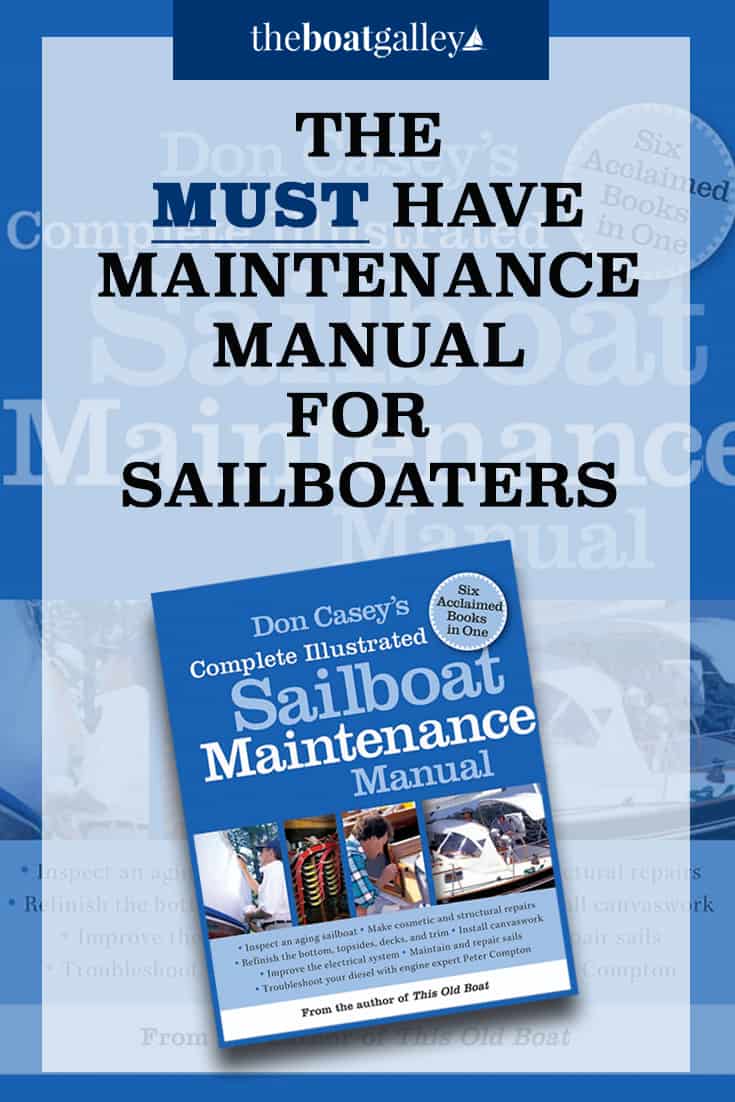
And check out our other courses and products
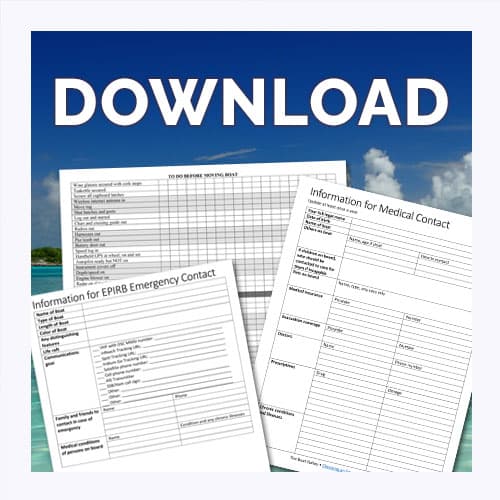
Find this helpful? Share and save:
- Facebook 620
- Pinterest 124
Reader Interactions
Verona says
May 19, 2014 at 10:32 am
Hi. Because of your review I just ordered a copy for the boat and obtained the last copy from Amazon.ca until they get more! I will give it to my captain for father’s day but I have a feeling it might be something I will use more than him! We used to keep the old Time Life series on boating (dates back to the 70s) on the boat, but they took up so much room. I like the idea of having one concise all around maintenance book! Thanks for reviewing it! Your site has given us some great ideas and we received our port visors just the other week! Another useful find from your site.
Ron Dionne says
August 3, 2015 at 9:31 pm
Materials composition and suitability of bonding is the trick. Or you could hand carve a cork.
Danielle Beaty says
August 3, 2015 at 9:45 pm
I’m interested in these compositing toilets. What are the advantages aside from not having to deal with a holding tank I reckon. Lol
August 3, 2015 at 10:09 pm
The Boat Galley says
August 3, 2015 at 10:08 pm
The big one for us is that the size of our holding tank (18 gal.) means that we have to get pumped out every three days. That really limits our cruising if we have to go to a pump out station that often! Second is the smell. The vent from our head makes being in the cockpit when someone flushes downright obnoxious — being in the boat isn’t that much better, either. Third: no thru-hulls. Fourth: no replacing that #$)(* joker value or rebuilding the pump.
Lori Steinbrunner says
August 4, 2015 at 3:55 am
We installed a composting head on our Gemini and converted one of the thru hulls for a saltwater wash down pump at the bow. Very handy.
Sterling Kennedy says
August 4, 2015 at 11:45 pm
What about the smell??
August 5, 2015 at 12:05 am
Virtually none. Much, much less than with the holding tank. I’ve used several on different friends’ boats and it was never even noticeable.
Fred Facker says
February 19, 2016 at 1:26 pm
It even has canvas patterns for sewing stuff.
Ana Paula Ribeiro says
October 4, 2017 at 8:50 pm
This book is the best!
Julia Weeks says
October 5, 2017 at 7:42 am
Love this book!
Leave a Reply Cancel reply
Your email address will not be published. Required fields are marked *
Each week you’ll get:
• Tips from Carolyn • New articles & podcasts • Popular articles you may have missed • Totally FREE – one email a week
SUBSCRIBE NOW
- Questions? Click to Email Me
- Visit Our Store


- Forum Listing
- Marketplace
- Advanced Search
- SailNet is a forum community dedicated to Sailing enthusiasts. Come join the discussion about sailing, modifications, classifieds, troubleshooting, repairs, reviews, maintenance, and more!
- Discussions & Reviews
- 174K members
Community Staff
Top Contributors this Month

- Sails & Canvas
- Hull & Structure
- Maintenance
- Sailing Stories
- Sailing Tips
- Boat Reviews
- Book Reviews
- Boats for Sale
- Post a Boat for Sale
- The Dogwatch
- Subscriptions
- Back Issues
- Article Collections
- Free for Sailors
Select Page
Don Casey’s Complete Illustrated Sailboat Maintenance Manual: Book Review
Posted by Durkee Richards | Book Reviews , Dogwatch

This is really six books in one. Five of them represent Don Casey’s considerable expertise in inspecting, maintaining and enhancing the mechanical and electrical systems of a sailboat. The sixth, a 160-page book on troubleshooting marine diesels by Peter Compton, was added for completeness. All in all, it makes a great addition to any sailor’s library.
Appropriately enough, the first “book,” titled “Inspecting the Aging Sailboat,” concludes with a nice recap on how to be your own surveyor and how to choose and work with a professional if you decide to proceed with a purchase. I really like the content and presentation of this book; it would have helped us to be better prepared for the first inspection of our boat, even though she was relatively new.
The next “books” on hull and deck repairs and refinishing are quite complete and very well illustrated. They should help give any owner the confidence to take on more and more boat projects. We all expect some age-related deterioration in our vessels and thus will expect to benefit from the sections on refinishing. We may not expect to need the stuff on major repairs to hull and deck, but it’s all there if and/or when needed.
The “book” on electronics is appropriately called “Sailboat Electrics Simplified.” Don leads off with a good note on safety and then delivers a fine primer on the basics. He continues with more details on batteries, wire and circuits, troubleshooting, charging systems and, finally, AC systems.
Peter Compton’s “book” on Troubleshooting Marine Diesels is as comprehensive as one could ever expect in a 160-page treatment. He begins with a short section on surveying the engine that will again be a great help to a first time boat buyer. The basic sub-systems of the engine are nicely treated and integrate well into the section on routine maintenance. The section on troubleshooting includes some very helpful flow diagrams to guide the reader through a logical work process.
Since the focus is on sailboats, Don finishes off with a nice section on canvaswork and sail repair.
This book will be a great addition to any sailor’s reference library. It will help any first time boat buyer be better prepared for that first detailed inspection. The clarity of writing and excellent illustrations will be appreciated by owners who want to take on more of their boat’s maintenance needs. By giving an owner a good understanding of all the steps involved in a project, this book may also help some owners decide which tasks they would prefer to hand over to a professional.
Don Casey’s Complete Illustrated Sailboat Maintenance Manual by Don Casey (International Marine/Ragged Mountain Press, 2005; 896 pages)
About The Author

Durkee Richards
Durkee Richards’ sailing adventures began in high school with the Sea Scouts on the Columbia River. Later, he and his wife, Mary, chartered boats on Lake Superior until they bought their J/32, Sirius, and retired to the Olympic Peninsula in Washington State. They have since sailed Sirius more than 20,000 nautical miles exploring the coast of British Columbia to Haida Gwaii and the west coast of Vancouver Island.
Related Posts

Guenevere’s West Coast Adventure: Book Review
December 1, 2006

Used Boat Notebook: Book Review
October 1, 2002

Sir Peter Blake: Book Review
October 1, 2005

Susan’s Sailing Adventures: Book Review
December 1, 2002
Now on Newsstands
Join Our Mailing List
Get the best sailing news, boat project how-tos and more delivered to your inbox.
You have Successfully Subscribed!
32 Best Sailing Books For Current and Future Yachtsmen
Heading out on a sailing adventure? Need some inspiration away from the YouTube creators we often featured? Then you’re in the right place.
We have rounded up the best books for sailing enthusiasts. You’ll find highly respected books on racing, cruising and sailboat maintenance for your next adventure on the open seas!
1. Chapman Piloting & Seamanship 69th Edition
One of the best sailing books available, the Chapman Piloting & Seamanship 69th Edition is a comprehensive book with descriptions, illustrations, and pictures for every situation.
Whether the need is a guide for it all or looking for some tips, the book has an easy-to-use index that makes it simple to find information.
2. The Complete Sailing Manual
The Complete Sailing Manual by Steve Sleight is a detailed book written by sailors for sailors.
It delves into the latest advancements in sailing, keeping the reader updated and ready to handle any situation.
3. Fifty Places to Sail Before You Die
Searching for a new, exciting place to sail can be exhausting. Chris Santella has an extensive list of options to bring back that exhilaration.
The handy guide gets inspiration by asking well-known sailors and athletes about their favorite places to sail.
4. The Ultimate Book of Everyday Knots
Every sailor needs to know how to tie a good knot, and Geoffrey Budworth has a fantastic instruction tool to start.
This book has illustrations of common knots used in sailing and other sports, with directions to ensure every tie is a success.
5. Bargain Boats and Budget Cruising
Sailing can be an expensive hobby, but it doesn’t have to be. Todd Duff has expert advice to keep the cost down.
This guide goes through the process of finding an economical boat and refitting it, so you can enjoy the water without breaking the bank.
6. Illustrated Sail & Rig Tuning
Sometimes a picture can be just what’s needed, and Ivar Dedekam has detailed illustrations for everything relating to sailing.
This handy guide explains the necessities of sailing and the theories to get the most out of any boat.
7. The Alaska Cruise Handbook
The wild waters of Alaska are a worthy goal for any sailor. With insights from Joe Upton, planning a journey through the Alaskan coast is more than practical.
Plan ports and explore the natural beauties of Alaska from the comfort of a personal sailboat.
8. The Sailing Bible
Jeremy Evans, Pat Manley, and Barrie Smith put together an extensive work covering the basics of sailing to niche activities like racing.
Even the most seasoned sailors can find something in one of the best sailing books around to enrich their knowledge, and beginners will feel ready to hit the water.
9. World Cruising Essentials
Taking on a long voyage can seem like a daunting task. Jimmy Cornell’s World Cruising Essentials makes the trip doable. This happens to be my favorite book on this list!
Learn about everything to prepare for the cruise and get crucial tips for spending the days at sea.
10. Landfalls of Paradise
Exploring the Pacific Islands can be a dreamy escape, and Earl R. Hinz’s writing makes it a carefree journey.
This guide has updated charts and descriptions to help make any sailing through the Pacific Islands easy to plan and execute.
11. The Voyager’s Handbook
Extended trips are one of the most fulfilling ways to experience life on the open seas, and Beth Leonard has a handbook to achieve it. Another personal favorite!
It not only covers the essentials needed on the boat but explains practical tips for keeping boat life enjoyable.
12. The World’s Best Sailboats: Boxset Vol.1&2
Ferenc Máté’s The World’s Best Sailboats has detailed pictures, illustrations, and descriptions of the finest boats in the world. Enjoy appreciating the fine craftsmanship while learning what makes certain boats excel.
This volume isn’t only fun to flick through as its information can be invaluable when selecting a boat.
13. The Big Book of Boat Canvas
Customizing a boat can be a fun way to make the vessel feel like home. One option is canvas, and Karen Lipe is here to explain multiple sewing projects.
From practical objects like sail covers to interior cushions, the options are endless in this handbook.
14. Sailing: The Basics
Newcomers will appreciate Dave Franzel’s book as it helps people get on the water and become sailors in no time. It follows his fundamental principle that time in the water is key to learning, so it gets through the essentials fast.
Get from the docks to the water in record time, and feel confident doing it.
15. The Blue Book of Sailing
Adam Cort hopes to take the reader of any experience level and turn them into true sailing experts. Through simple lessons, it explains everything needed to sail.
Some basic knowledge of sailing can be necessary for reading, but anyone will benefit from the tips.
16. BoatSense: Lessons and Yarns from a Marine Writer’s Life Afloat
Combining narrative and guidebook, the unique BoatSense: Lessons and Yarns from a Marine Writer’s Life Afloat gives realistic tips based on Doug Logan’s experience.
The true tales from this sailor aren’t just for fun, as they pleasantly explain crucial teachings that are usually exclusive to years of sailing.
17. The International Marine Book of Sailing
The International Marine Book of Sailing by William Robinson is great for beginners looking to learn everything.
This book has handy illustrations and other valuable insights neatly organized to get the reader ready to sail as soon as possible.
18. The Ashley Book of Knots
This comprehensive book covers around 3,900 types of knots with brief descriptions, drawn guides, and other information.
This manual not only covers basic knots but includes complex versions that can be used on the boat or to impress friends.
19. The Handbook Of Sailing
For visual learners, Bob Bond has thousands of diagrams and color photos to explore the basic techniques of setting sail.
The guidebook has helpful descriptions to accompany the pictures and assists the reader through any situation.
20. Sailing America
See the beauties of the United States from coast to coast in this picture collection from Onne van der Wal. Enjoy the views from the sea without even sailing across thousands of miles.
Whether it’s for inspiration or to admire the expert photography, any sailor can appreciate the beautiful landscapes in this book.
21. The Annapolis Book of Seamanship
Another comprehensive guide that covers everything from the basics to handling extreme conditions. John Rousmaniere is on hand to get the reader for any sailing situation.
This book progresses from the simplest tasks to the most challenging endeavors, with traditional techniques mixed with newer innovations.
22. Desirable and Undesirable Characteristics of the Offshore Yachts
Searching for a sea-worthy vessel can be a challenging task, but Steven L. Davis aims to make it much easier.
This guidebook examines trends and other information to prepare the reader for the boat market. That data will be invaluable to understanding what to look for when choosing their own.
23. Sailing Is Fun!: A Beginners Manual For Young Sailors
Kids looking to sail can learn the basics from Charles D. Dawson. His book uses only simple terms, making it easy for children to follow.
It stresses water safety to keep youngsters safe, and it’s an invaluable tool for anyone wanting to pass on sailing traditions.
24. The Best Used Boat Notebook
A cost-effective way to get into sailing is through a used boat, and The Best Used Boat Notebook from John Kretschmer gives every tip needed.
This detailed guide breaks down the specifics any potential boat owner should know.
25. The Cruising Guide to the Virgin Islands
Explore the crystal waters of the Virgin Islands with help from Simon Scott’s experience.
It also includes a handy chart that folds out to aid your plans for the sailing voyage.
26. Marina’s Best
A significant portion of sailing is in marinas, and anyone hoping to manage their marina can get the knowledge necessary from Dr. Amos Raviv.
This work guides the reader through everything necessary to run a marina and ensures sailors understand the rules and regulations of marina use.
27. Crewing to Win
Racing sailboats is an intense sport, and it relies on crew teamwork. To build the best team, try reading Crewing to Win by Saskia Clark.
This handbook explains how to form a team, set goals, and keep things running smoothly out on the water.
28. Building Outrigger Sailing Canoes
Outrigger canoes are a unique and traditional form of sailing, often handmade by indigenous Hawaiians .
Building Outrigger Sailing Canoes by Gary Dierking helps explain the best way to create an outrigger canoe with contemporary methods.
29. Reeds Skipper’s Handbook
Owning a small index of essential knowledge can be invaluable at sea, and Malcolm Pearson’s Reeds Skipper’s Handbook is just that.
This book is an indispensable guide for any experienced sailor, as it’s easy to reference and find exactly what you’re looking for.
30. The Best of Sail Trim
This volume is a compilation of the best articles from SAIL magazine, collected for ease of access. Explore tips ranging from cruises to racing.
The information in this book is easy and enjoyable to read while giving plenty of priceless tips.
31. Elvstrøm Explains the Racing Rules: 2021-2024 Rules
Get into racing with this complete guide Elvstrøm Explains the Racing Rules: 2021-2024 Rules. Written by the Olympic sailor Paul Elvstrom, learn all the ins and outs to win first place.
This book has a quick reference guide for racing flags and ways to help plan the best course.
32. Maneuver and Dock Your Sailboat Under Power
Docking a boat can be one of the most challenging tasks a sailor can undertake. Maneuver and Dock Your Sailboat Under Power by Grant Headifen prepares the reader for docking in any condition.
Feel confident sailing into the marina with one of the best sailing books focused on navigation, and never risk bumping into the docks again.
Better Sailing

Sailboat Maintenance Checklist
Whether your sailboat is stationary for a long time, or whether you live and travel with it, there are several key things to keep an eye on. Regular maintenance of your sailboat will ensure more years of use and better performance. Furthermore, your sailboat will be safer and it will keep its value longer. Below you’ll find a checklist for routine mission-critical checks. Some of these checks have to be performed both daily and monthly. Others require monthly and annual checks, but always make sure to inspect everything, thoroughly. Follow the steps of the list and ensure trouble-free sailing.
The engine of your sailboat is something that requires a lot of care and attention. Inspect regularly the condition of the engine and look for corrosion, as well as make sure that the outboard motor is securely in place. Daily maintenance of the engine consists of:
- Check the engine’s oil level.
- Check the belt tension.
- Transmission fluid level.
- Inspect pulleys as well as the alignment.
- Alternator and water pump belts have to be tight.
And now we’re moving on to the monthly maintenance of the engine which includes:
- Change the oil and filter of the engine.
- Clean the thru-hull.
- Clean the siphon break.
- Fill up coolant and antifreeze if needed.
- Check pump, impeller, and raw water strainer.
Finally, let’s see the annual maintenance of your sailboat’s engine:
- Test the batteries.
- Check the diesel tank for damages.
- Inspect the shaft and propeller.
- Change primary and secondary fuel filters.
- Bleed the fuel system.
Check the Bilge and Bilge Pump
The bilge is situated at the bottom part of the sailboat and collects excess water. The bilge pump is the piece that removes water from the bilge. If the bilge pump is damaged, your sailboat can even be sunk! In order to keep yourself and your boat safe, check the pump hoses for debris that could cause clogs. In case you find a leak, the first thing you should do is to taste the water. Is it freshwater or saltwater? So, every few days survey the bilge for oil, water, or fuel leaks. Moreover, it’s important to lift a central floorboard often just to ensure that the bilge is dry. Leaks can be caused by different areas. For instance, leaks that come from holes in the deck, loose hatch seals, or improperly sealed windows.

>>Also Read: Common Sailboat Problems and How to Fix Them
Always inspect probable damages to your sailboat, even if it’s in a well-maintained condition. It’s recommended to make monthly and yearly checks to make sure it stays in perfect condition. Firstly, inspect the hull, keel, and rudder and look for any damages, cracks, and blisters. Then, make sure that the drain plugs are in place. Apply gel coat restorer or a rust inhibitor to the scratches or to the rusting of your sailboat’s bodywork. Moreover, you will also need to remove your sailboat from the water, once a year. It’s easier to do this during the winter months and although this can be a costly thing to do, is really worth it. Like this, you’ll get a better image of the hull’s condition and fix anything that needs repair. Finally, remember to annually carry out anti-fouling and any re-painting or zinc replacement.
Raw Water Strainers and Freshwater Levels
Don’t forget to check your seas strainers! If you’re running your generator, heat/air conditioning, or anything that requires saltwater or raw cooling system to function, you might want to surveil your strainers. Furthermore, inspect the water flow on all of the raw water cooling systems. You have to see an easy flow of heating, Genset, refrigeration, and aircon cooling water out of the system. If the freshwater system, which is pressurized by an accumulator tank gets too low, then it throws the whole system out and thus it will not be working properly. So, it’s imperative that you never let your water tanks empty.
As for the electrical system it is recommended to check it every month. Check the condition of the wires, if they’re neatly secured, dry, and inspect their casings to see if they are intact. However, there are some sailboats that have their generator running periodically to charge them up. So, keep an eye on your battery’s charge levels. Also, the electrical lines must be in good condition to keep the electrical system on your sailboat up and running. Any damaged lines could provoke a fire hazard. To prevent electrical lines from erosion, remember to keep them clean, and use a digital multimeter to make sure everything’s working properly.
Without the battery, which is the heart of your sailboat, the engine won’t start, nor the electrical components will work. So, take good care of the battery and check it once a year, or more often, i.e. during the boating season. Keep in mind that batteries naturally degrade over time, so this is a must task to perform. You can check the battery’s charge with a digital multimeter, and the connections for corrosion. Moreover, test the batteries and check if they’re clean and dry. There are sailboats that have solar and wind power that continuously tops up the batteries. Other sailboats depend on having the generator running periodically in order to charge them up.
In case you’re running the generator you will need to check its vitals at least once a week. So, check the oil, belt, water level, and inspect for leaks and loose connections. You can see the leaks easier if you keep the Genset clean.
Oil and Filter
Remember to regularly change the oil and oil filter. In case you don’t, then it is possible to provoke damage to the engine parts. In order to change the oil, let the engine run for about seven minutes, then turn it off. Subsequently, place a container under the drain plug. Take out the drain plug and loosen the screw that is located above. Then, let the oil drain out for about 30 minutes. During this process change also the oil filter. After the oil drains out, replace the drain plug and tighten the screw. Finally, fill the engine with the proper oil.
Fridge and Freezer Temperature
The effectiveness of a fridge often depends on the temperature of the sea. Many boat refrigeration systems get a charge over time which makes them less effective. Therefore they slowly reduce the temperature gauge. So, it is recommended to change the temperature gauge at least once a week. The temperature of the fridge has to be below 5 degrees and the freezer below freezing.
Sails and Rigging
Sails and rigging have to be checked at least once a month. Firstly, look out for any chaffing where the headsail sheets attach to the clew, and also to the traveller and boom vang. Secondly, examine thoroughly if there’s any wear on the mainsail. Then, check if the cotter pins and shroud are in place and in good condition. Finally, make sure that the turnbuckles and pelican hooks on the lifeline are in good condition.
Summary- Maintenance List
Your sailboat’s maintenance needs to be taken seriously. When you’re regularly maintaining your sailboat, you also ensure its life spanning. Some basic items that require constant maintenance are the generator, the battery, the plumbing, the bilge, oil, and the fridge and fluid levels, among others. However, there are others that require monthly or yearly maintenance, such as the engine, the electrical system, the sails and rigging, the propeller, zippers, hinges, upholstery, etc. In case you can’t repair or check the condition of these parts, then consider contacting a professional to help you with the maintenance process.
Peter is the editor of Better Sailing. He has sailed for countless hours and has maintained his own boats and sailboats for years. After years of trial and error, he decided to start this website to share the knowledge.

Related Posts

Atlantic vs Pacific: Which is More Dangerous for Sailing?

Why Do Sailboats Lean?

How Does a Boat Sail Upwind? Unveiling the Mechanics of Against the Wind Sailing

How Does Sailing Work? The Physics of Sailing
- Buyer's Guide
- Destinations
- Maintenance
- Sailing Info
Hit enter to search or ESC to close.

- Sports & Outdoors
- Outdoor Recreation
Enjoy Prime FREE for 30 days
Here's what Amazon Prime has to offer:
Buy new: $68.00 $68.00 FREE delivery: Friday, April 19 Ships from: Amazon.ca Sold by: Amazon.ca
Buy used: $48.99.
Fulfilment by Amazon (FBA) is a service we offer sellers that lets them store their products in Amazon's fulfilment centres, and we directly pack, ship, and provide customer service for these products. Something we hope you'll especially enjoy: FBA products qualify for FREE Shipping
If you're a seller, Fulfilment by Amazon can help you grow your business. Learn more about the program.

Download the free Kindle app and start reading Kindle books instantly on your smartphone, tablet or computer – no Kindle device required .
Read instantly on your browser with Kindle for Web.
Using your mobile phone camera, scan the code below and download the Kindle app.

Image Unavailable

- To view this video, download Flash Player

Follow the author

Don Casey's Complete Illustrated Sailboat Maintenance Manual: Including Inspecting the Aging Sailboat, Sailboat Hull and Deck Repair, Sailboat Refinishing, Sailbo Hardcover – Illustrated, Oct. 6 2005
Purchase options and add-ons.
- Evaluate the condition of your boat or one you’re about to purchase
- Repair structural damage to your fiberglass sailboat
- Improve or repair your sailboat’s electrical system
- Troubleshoot, maintain, and repair your boat’s diesel engine
- Put a professional-looking finish on your boat’s hull, deck, spars, wood, and trim
- Make and repair sails, sail covers, dodgers, awnings, sailbags, and bimini tops
- Print length 896 pages
- Language English
- Publisher International Marine/Ragged Mountain Press
- Publication date Oct. 6 2005
- Dimensions 19.3 x 4.06 x 23.88 cm
- ISBN-10 0071462848
- ISBN-13 978-0071462846
- See all details
Frequently bought together

More items to explore

Product description
From the publisher.
Don Casey is the author of the universally praised This Old Boat , which has helped tens of thousands of boatowners turn their rundown production boats into first-class yachts. A regular contributor to SAIL and Good Old Boat magazines, he combines more than three decades of sailing, an innate curiosity, a knack for clarity, and an eye for the telling detail to deliver reliable expertise. He and his wife, Olga, cruise the Caribbean aboard their 35-year-old, much-modified Allied Seawind.
From the Back Cover
- Evaluate the condition of your boat or one you're about to purchase
- Improve or repair your sailboat's electrical system
- Troubleshoot, maintain, and repair your boat's diesel engine
- Put a professional-looking finish on your boat's hull, deck, spars, wood, and trim
About the Author
Product details.
- Publisher : International Marine/Ragged Mountain Press; 1st edition (Oct. 6 2005)
- Language : English
- Hardcover : 896 pages
- ISBN-10 : 0071462848
- ISBN-13 : 978-0071462846
- Item weight : 1.46 kg
- Dimensions : 19.3 x 4.06 x 23.88 cm
- #7 in Instructional Sailing
- #7 in Instructional Sailing in Water Sports
- #68 in Boating in Outdoor Sports
About the author
For the last three decades Don Casey has been America’s most consulted authority on care of and outfitting cruising sailboats, an unlikely evolution for a motorcycle and sports car devotee growing up 1,000 miles and more from an ocean. What initiated this trajectory was a 1970 National Geographic article. Don was in his last year at the University of Texas when the October issue landed in his mailbox. In text and stunning photos, it narrated the last leg of Robin Lee Graham’s five-year solo circumnavigation aboard a 24-foot sailboat.
Don rode his BSA immediately to the University library to read the previous two articles National Geographic had published recounting the rest of the voyage. Graham was younger than Don, yet he had already experienced so much of the wider world. Suddenly a skinny black necktie and a metal desk at IBM or EDS seemed less appealing to Don than it had before the postman passed by. He began reading and acquiring books about sailing.
Seven months later, the day after his last final exam, he loaded his car with those books and his clothes and drove to Miami, where he immersed himself in everything nautical. He soon purchased a sailboat and began frequently crossing the Gulf Stream to the Bahamas islands. There an event Don was not even aware of would nudge him toward a writing career. A long-lens capture of Don on board in the far Out Islands published in a regional sailing periodical triggered an exchange of correspondence with the editor that resulted in Don penning an article for that magazine. Soon he was writing for nearly all boating magazines across the country. A book followed, then another, and so on.
Sensible Cruising: The Thoreau Approach has done for innumerable readers what the National Geographic article did for Don—revealed a previously unknown or unimagined possibility. It is a book that has changed many lives.
This Old Boat has long been the undisputed bible for selecting and outfitting a capable sailboat, and for lowering cost and improving safety by teaching the concepts and skills necessary to do most required maintenance, repair, and improvement. The Second Edition is providing the same benefits for a new generation.
Don Casey's Complete Illustrated Sailboat Maintenance Manual is actually a library of six books covering virtually all common sailboat maintenance issues. It has been described as “The definitive guide from the world's best-known sailboat maintenance expert.” Generously illustrated, it shows as well as tells. If reader reviews are to be believed, almost every owner of this hefty volume finds it indispensable.
There are eight other Don Casey books, all but one about sailing or sailboat care. That one requires special mention.
Before internet, cell phone, and DVDs, almost every cruising sailboat carried around a bag of paperback books which were traded whenever you arrived in a new anchorage or a new boat arrived in yours. Over thousands of nights at anchor, Don read scores of mystery novels, with the mediocrity of many making him wonder if he could do better. Between publication of his first marine book and his second, he gave it a shot and quickly found an enthusiastic New York publisher. Unfortunately, turmoil in the publishing industry at that time caused the manuscript to move from imprint to imprint until it disappeared altogether, never making it into print.
Having continued reading mystery novels, and having pretty much said all he has to say about sailing, Don recently returned to the idea of writing a mystery. The happy result is Marjoram & Mace, to be published in early 2024. It has garnered enthusiastic pre-publication praise, and it will be available in a Kindle version at a 1980’s paperback price. Don hopes you will take a chance on it.
Customer reviews
Reviews with images.

- Sort reviews by Top reviews Most recent Top reviews
Top reviews from Canada
There was a problem filtering reviews right now. please try again later..
Top reviews from other countries
- Amazon and Our Planet
- Investor Relations
- Press Releases
- Amazon Science
- Sell on Amazon
- Supply to Amazon
- Become an Affiliate
- Protect & Build Your Brand
- Sell on Amazon Handmade
- Advertise Your Products
- Independently Publish with Us
- Host an Amazon Hub
- Amazon.ca Rewards Mastercard
- Shop with Points
- Reload Your Balance
- Amazon Currency Converter
- Amazon Cash
- Shipping Rates & Policies
- Amazon Prime
- Returns Are Easy
- Manage your Content and Devices
- Recalls and Product Safety Alerts
- Customer Service
- Conditions of Use
- Privacy Notice
- Interest-Based Ads
- Amazon.com.ca ULC | 40 King Street W 47th Floor, Toronto, Ontario, Canada, M5H 3Y2 |1-877-586-3230

- Gear Directory
- Multihull Sailor
- Boats for Sale
- Real Estate
- Maintenance & Hardware
- Water Sports
Become Captain of the Sea: Best Sailing Books

A sailing manual is an indispensable item in a sailor’s gear. Sailing manuals are troves of information about sailing. Irrespective of sailing ability or experience, there are always loads of information to get from sailing manuals. They contain general sailing information like steering and more specific ones like docking and knot tying.
The American Sailing Association (ASA) recommends some sailing manuals to sailors looking to get ASA’s certification. The recommendation of such manuals has further elevated the importance of sailing manuals to sailors. Having scoured the length and breadth of the sailing world, we identified the following sailing manuals as the best sailing manuals in 2024. The sailing manuals identified range from ASA-recommended manuals to other sailing manuals that provide valuable tips and guidance on handling various sailing problems.
Our Top Picks
- Best for Experts: Boat Owners Mechanical and Electrical Manual (Fourth Edition) Shop Now ➔
- Best for Solo Sailors: Stress-free Sailing: Single and Short-handed Techniques Shop Now ➔
- Best for Beginners: Sailing Fundamentals Shop Now ➔
- Most detailed: Don Casey’s Complete Illustrated Sailboat Maintenance Manual Shop Now ➔
- 1 What Are Sailing Manuals?
- 2 Sailing Manuals vs. Owner’s Manuals
- 3 What Do I Need to Consider Before Buying a Sailing Manual?
- 5 Writer’s pedigree
- 6 Your specific needs
- 7 Manual’s format
- 8 Illustration
- 9 Year of publication
- 10 How Much Do Sailing Manuals Cost?
Is sailing hard to learn?
Do you need asa certification to sail, what is the difference between us sailing and asa, can i learn sailing with only a manual book, best sailing manual, best for experts.
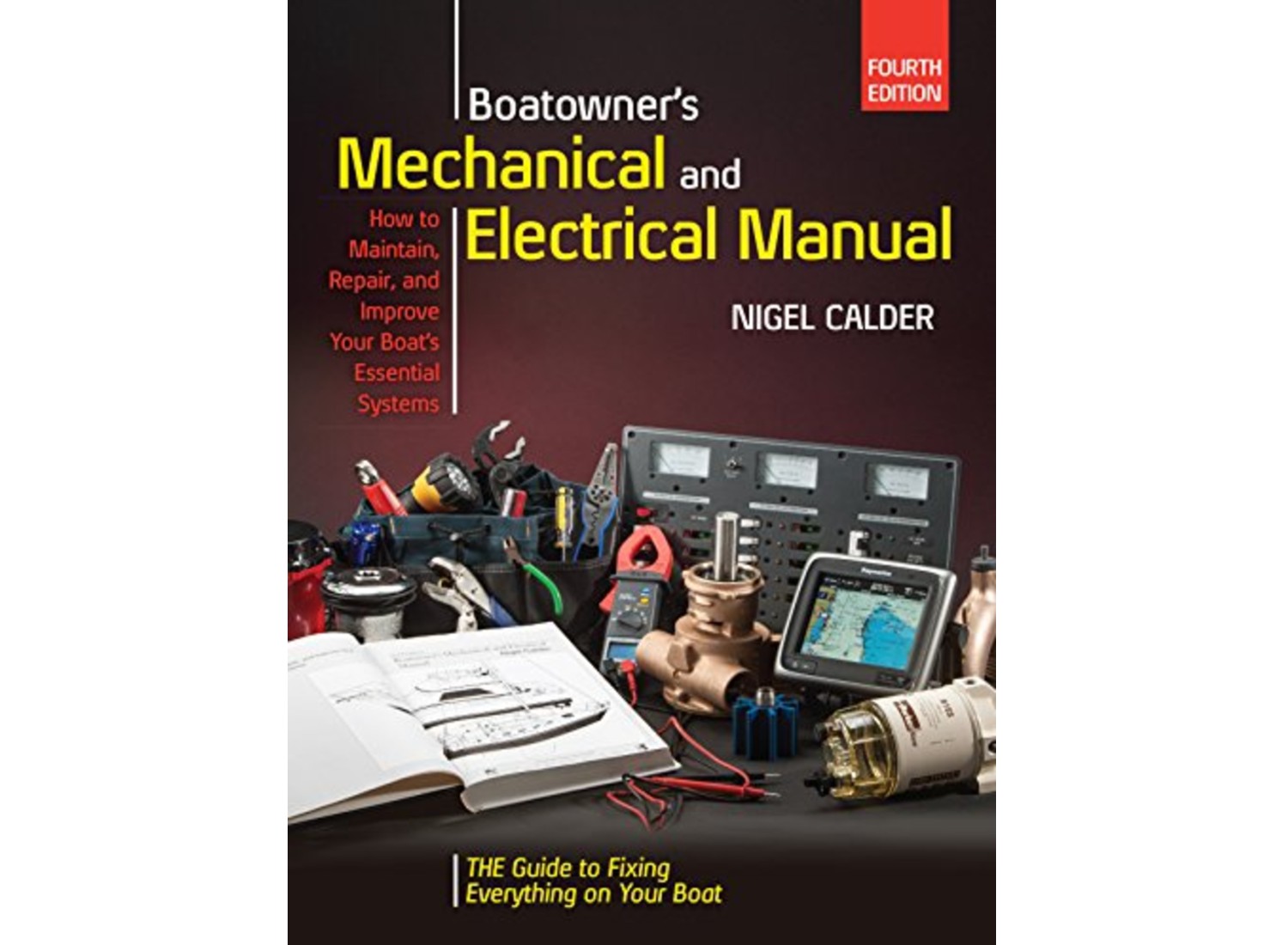
Boat Owners Mechanical and Electrical Manual (Fourth Edition)
Now in its fourth edition, this sailing manual contains all the latest information on the care and maintenance of a boat’s electrical and mechanical components. The book has a wide array of sections that have been updated with the latest handling techniques and tips.
- It comes in Kindle and hardcover formats.
- It is the most detailed manual on the electrical system of boats.
- It contains up-to-date information.
- The subject of powerboat electrical systems is not well covered.
Key Features
The Kindle format of this manual is text-to-speech enabled.
Best for Solo Sailors
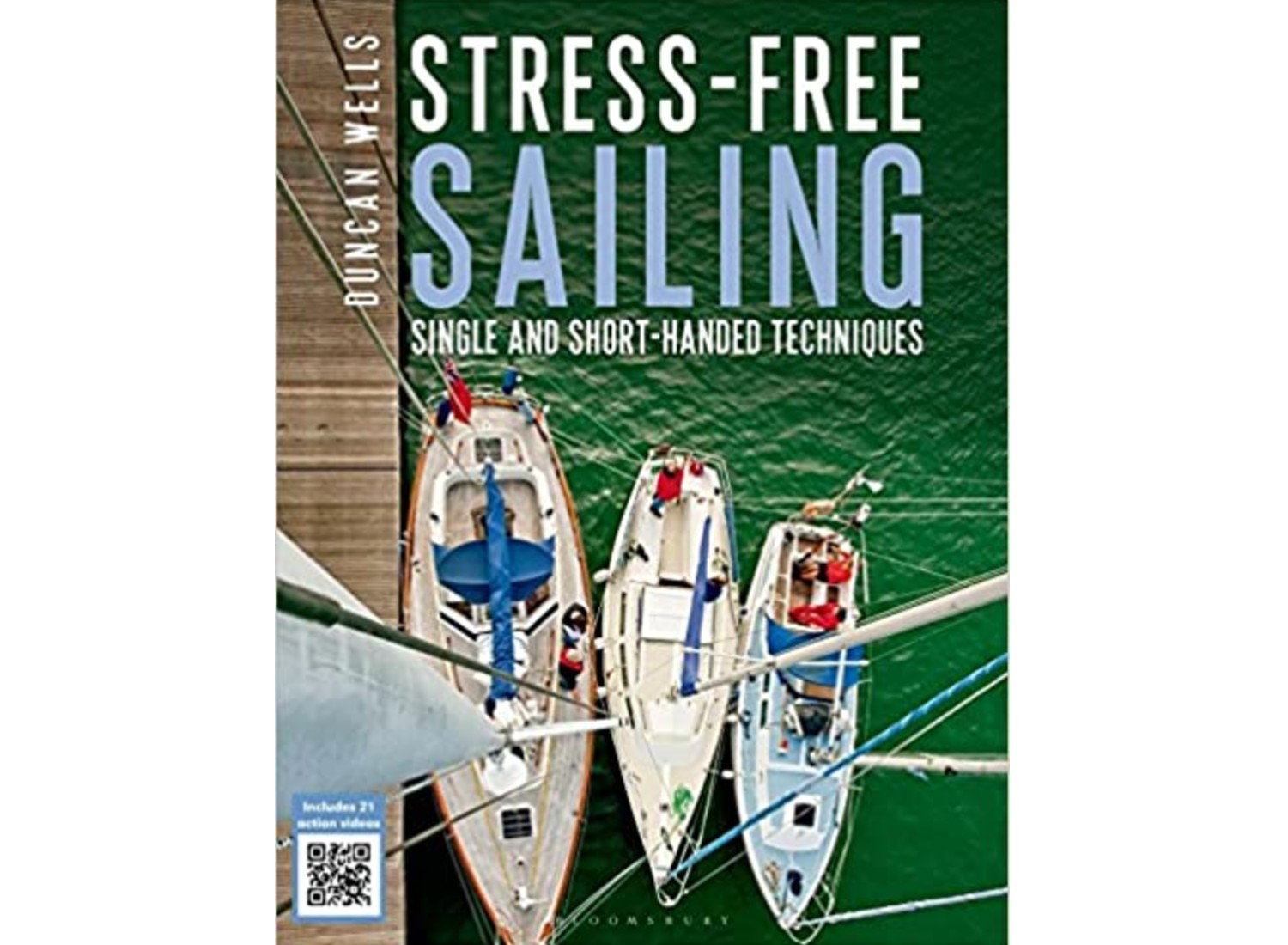
Stress-free Sailing: Single and Short-handed Techniques
Stress-free Sailing: Single and Short-handed Techniques contains tips, hacks, and techniques for sailors riding alone or riding with people without sailing knowledge. It painstakingly covers areas of sailing that could prove daunting to a sailor sailing solo.
- It comes in Kindle and hardcover format.
- It offers the best tips on docking.
- The book contains many British colloquialisms that may be difficult for non-speakers of British English.
The manual contains video tutorials for readers.
Best for Beginners
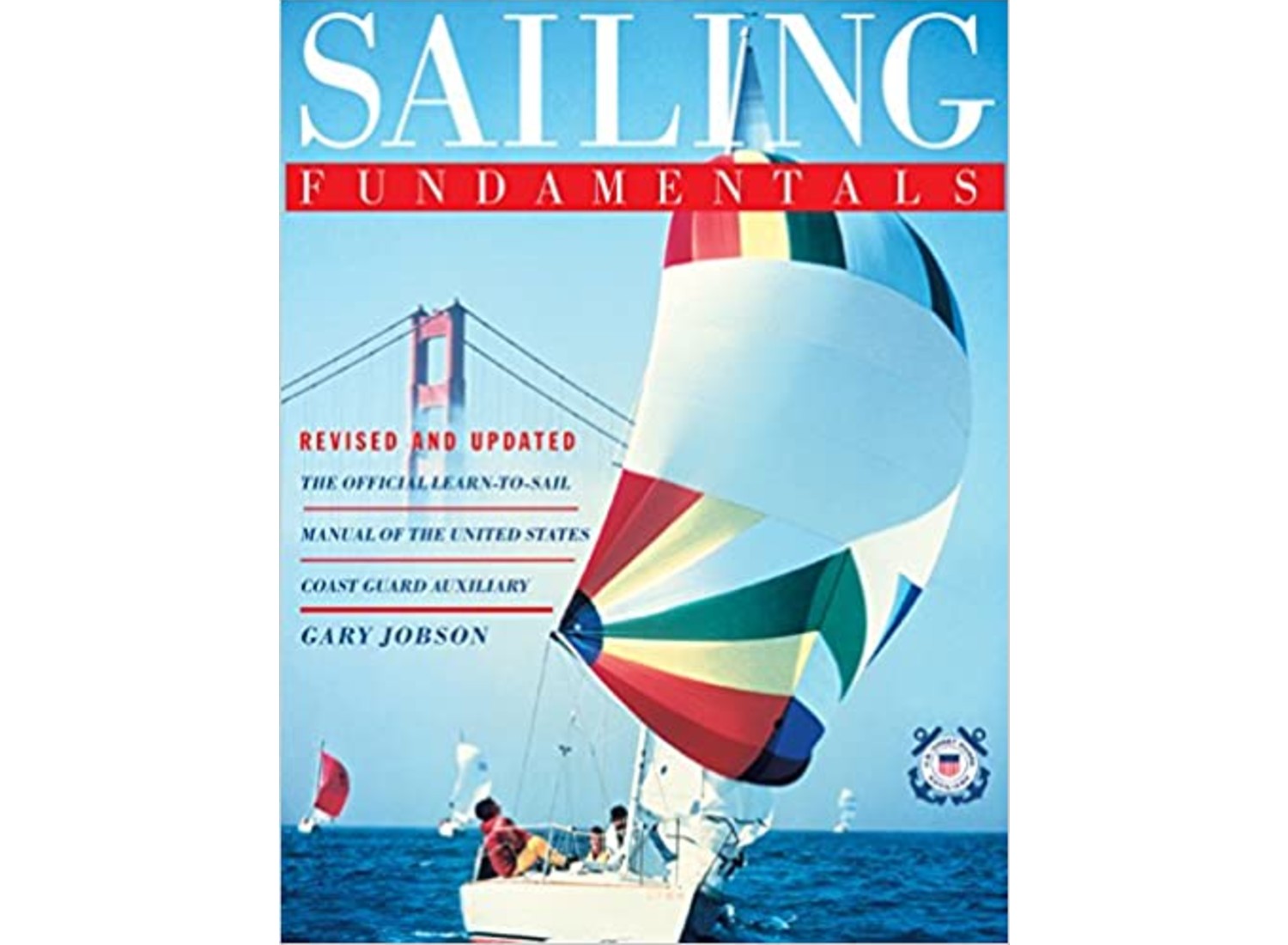
Sailing Fundamentals
Sailing Fundamentals teaches the basics of sailing to new sailors and boat owners. It contains visual illustrations that help newbies get more clarity of the written text. Because it treats the basics of sailing, it is a recommended manual for sailors taking the American Sailing Association’s certification course.
- It breaks down sailing terminologies for newbies.
- It extensively discusses the topic of coastal sailing
- It is an ASA-recommended text.
- The book has not been updated in a long time.
It comes in three formats; paperback, Kindle, and library binding.
Most detailed
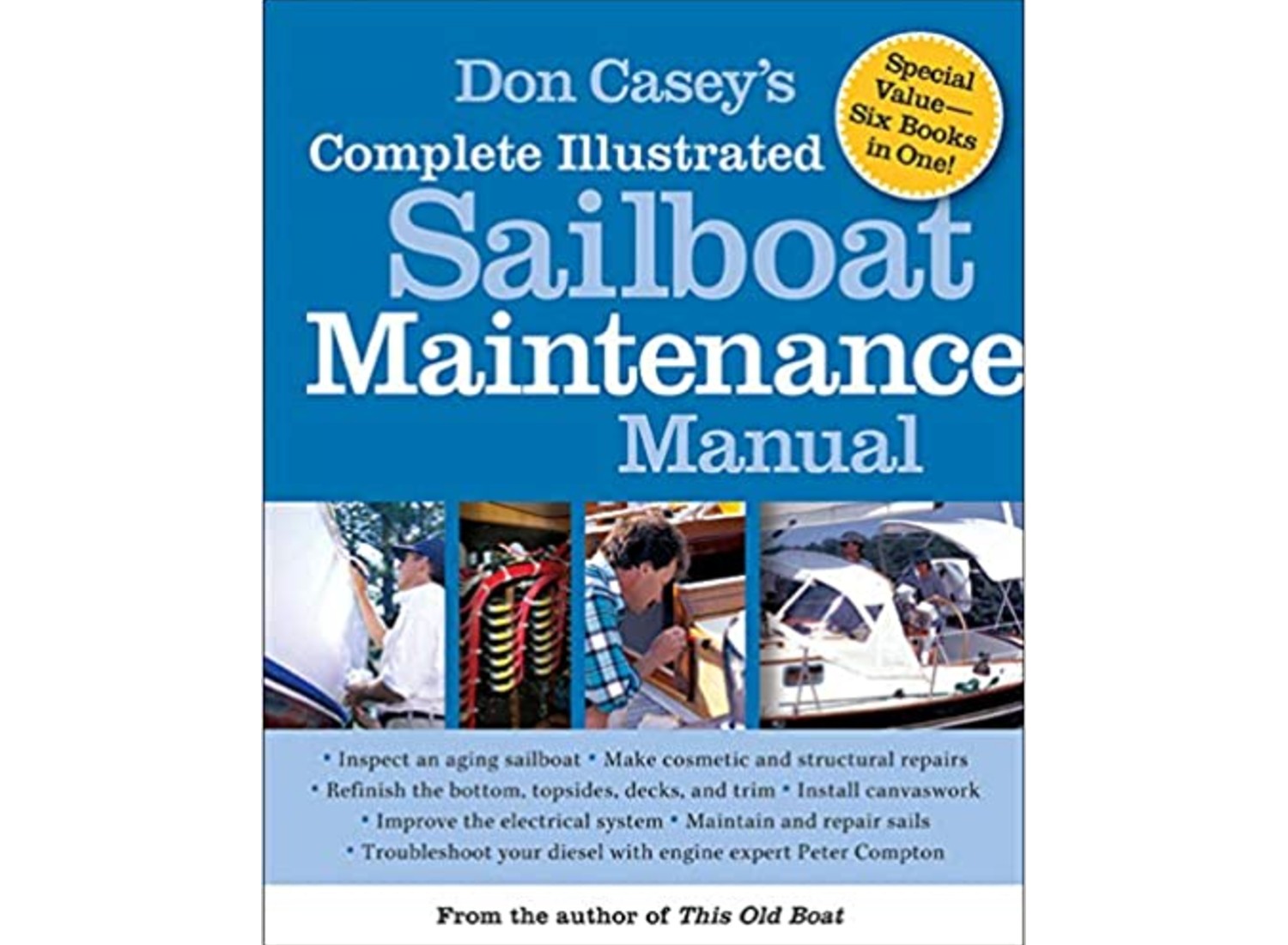
Don Casey’s Complete Illustrated Sailboat Maintenance Manual
The book contains an in-depth guide on the nitty-gritty of maintaining sailboats. The book also contains tips for troubleshooting system faults. The topics of maintaining diesel engines and the electrical systems of sailboats are extensively discussed in the book.
- It contains helpful illustrations.
- It is written in basic English that makes the understanding of concepts easier.
- It is a little pricey
The book is an aggregation of six different books on various areas of sailing by the author.
Best Sailing Manuals Buying Guide
What are sailing manuals.
Sailing manuals are guides written purposely to help sailors and boat owners better maintain their boats. They usually contain areas not covered at all or insufficiently covered in the owner’s manual that comes with ships and boats.
Usually, the content of the boat owner’s manual revolves around ideal situations without putting much thought into various variables and eventualities. On the other hand, sailing manuals contain guides and tips that are tailored to help sailors troubleshoot and solve real-life boat problems.
Experience is the best teacher, they say. Authors of sailing manuals are often experienced sailors themselves. They, therefore, draw on their wealth of experience to write sailing manuals that provide tips on general boat handling and maintenance .
Sailing Manuals vs. Owner’s Manuals
As stated earlier, manufacturers do not always consider various variables when writing owner’s manuals, while sailing manuals contain solutions to identified sailing problems. Apart from this, it is easier to get a copy of a sailing manual than an owner’s manual. This is because owner’s manuals are only gotten when you buy a boat from the manufacturers. Conversely, sailing manuals are available for sale to anyone whether they own a boat or not. Also, if a boat owner misplaces the owner’s manual, getting a new one from the manufacturer will be an uphill task. However, getting a detailed sailing manual from a bookstore or online is quite easier.
What Do I Need to Consider Before Buying a Sailing Manual?
Before buying a sailing manual, you should consider various factors to help you make an informed choice.
The first factor to consider before buying a sailing manual is the language the manual is written in. You do not want to buy a manual written in a language you do not understand. Alternatively, if your desired manual is written in a foreign language, you can search further for the translated version. However, translated versions may not always be available.
Also, it is not enough that the manual is written in a language you understand. You should look out for manuals written with clear and concise diction. Some manuals may contain many technical jargons that leave readers dumbfounded. A manual bought to provide answers should not leave you more confused.
Writer’s pedigree
Before buying a sailing manual, you should research the author’s pedigree. You cannot give what you do not have; an author without sufficient background in sailing may not be able to give you solutions to the questions you have. Thus, you should buy sailing manuals written by authors with vast experience and background in sailing.
Your specific needs
There are many sailing manuals around. These manuals treat different sailing topics at varying depths. Some offer general information and tips about particular topics, while others go deep into the nitty-gritty of such topics.
Also, some manuals are boat-specific; they only cover subjects relating to a particular type of boat. If you do not use the specific type of boat covered in such manuals, it may not be useful to you.
Manual’s format
Like normal books, manuals are available to readers in different formats. They could come in traditional hard copy format or in soft copy format.
Soft copy format includes ebooks, pdfs, and Kindle books. They are portable and can be safely carried around on flash drives, phones, and laptops.
Hard copy formats are written on paper and could be paperback or hardback. For all the portability and ease of access that soft copies have, some people may find it hard to concentrate when reading from a screen. Thus, you should weigh the pros and cons of each format before buying.
Illustration
Since manuals provide descriptions and how-to guides, illustrations like videos and diagrams are important parts of a good manual. Illustration helps readers to understand the content of a sailing manual better. A manual without illustration may sound abstract, boring, and dry. Readers may even get lost in an ocean of words.
Year of publication
We live in a fast-paced world where information is constantly changing. The more recently a manual is published, the more updated it is. Therefore, when faced with similar sailing manuals on the same topic, you could use the year of publication as the tiebreaker. Since the most recently published or revised manual is more likely to contain the latest information on the subject matter.
How Much Do Sailing Manuals Cost?
The price of sailing manuals differs for a lot of reasons. The volume and format are the two most common determiners of price. Cheap sailing manuals could cost as little as $5, while expensive ones cost between $75 and $100.
A good sailor and would-be sailor should invest in sailing manuals. They could save you precious time and money. They are filled with various do-it-yourself hacks that you may not find in the owner’s manual of your boat.
Further, there is a wide difference between sailing manuals and sailing adventures. Sailing manuals are strictly guides that may contain anecdotes from the author’s sailing experience, while sailing adventures are stories of sea voyages that may not necessarily be true.
People Also Asked
With the right guidance, sailing is easy to learn. Also, patience and consistency will help make a newbie’s learning process smoother and more enjoyable.
The American Sailing Association’s certificate is not a prerequisite to sail. However, getting an ASA certification adds to your sailing resume. It also helps you in getting a bareboat charter.
The two bodies are similar in that they offer certifications to sailors. The US Sailing concerns itself with certifying racers and oversees the US Olympic sailing team’s training. ASA focuses more on recreational sailors.
Manual guides contain valuable information on sailing. However, they are not enough to replace the physical presence of a sailing instructor.
Article Contributors
Sail magazine review team.
SAIL Magazine Review Team reports on best-selling products in sailing and boating. The SAIL Magazine editorial staff is not involved in the creation of this content. SAIL Magazine is reader-supported: When you buy through links on our site, we may earn an affiliate commission. The SAIL Review Team is composed of authors, editors, and sailors. Artificial Intelligence (large language models) may have been used in the research and creation of the content.
To ensure questions about product testing or a specific article are addressed, please contact [email protected]

Service Locator
- Angler Endorsement
- Boat Towing Coverage
- Mechanical Breakdown
- Insurance Requirements in Mexico
- Agreed Hull Value
- Actual Cash Value
- Liability Only
- Insurance Payment Options
- Claims Information
- Towing Service Agreement
- Membership Plans
- Boat Show Tickets
- BoatUS Boats For Sale
- Membership Payment Options
- Consumer Affairs
- Boat Documentation Requirements
- Installation Instructions
- Shipping & Handling Information
- Contact Boat Lettering
- End User Agreement
- Frequently Asked Questions
- Vessel Documentation
- BoatUS Foundation
- Government Affairs
- Powercruisers
- Buying & Selling Advice
- Maintenance
- Tow Vehicles
- Make & Create
- Makeovers & Refitting
- Accessories
- Electronics
- Skills, Tips, Tools
- Spring Preparation
- Winterization
- Boaters’ Rights
- Environment & Clean Water
- Boat Safety
- Navigational Hazards
- Personal Safety
- Batteries & Onboard Power
- Motors, Engines, Propulsion
- Best Day on the Water
- Books & Movies
- Communication & Etiquette
- Contests & Sweepstakes
- Colleges & Tech Schools
- Food, Drink, Entertainment
- New To Boating
- Travel & Destinations
- Watersports
- Anchors & Anchoring
- Boat Handling
How To Keep A Captain's Log Book
Advertisement
While not required for recreational boats, keeping this tradition gives you a record of time and places spent aboard your boat — plus maintenance and fishing histories.

Photo: Frank Lanier
When it comes to boating, few things are as easy to do, yet provide so much benefit, as keeping a ship's log. From navigation data to trip notes and vessel repairs, a ship's logbook provides a centralized means to document and record the myriad things that encompass operating a boat. Here's how to maximize one of the best habits a boat owner can have.
What Is A Ship's Log?
A ship's log (aka, captain's log) is used to document information about your vessel, as well as pretty much anything else related to its operation and upkeep. A traditional ship's log is typically a medium-sized bound book, notebook, or binder. These come in a wide variety of formats and choices, which can be tailored toward the type of vessel they will be used on. For example, a rich, leather-bound log may visually complement the helm of a larger yacht, but a logbook with waterproof pages (paired with a pen that won't smudge or wash off) may be more practical for smaller, more exposed vessels.
Modern digital logbook formats are also popular and, unlike a paper log, provide the ability for family and friends to easily view your adventures via online posts and social media. (For more, see " Modern Logging ".) This ability to view your location and progress can be a huge plus should something go wrong. A captain's log app downloaded to your phone can also be a great alternative to a full-blown logbook for smaller vessels or trips of limited duration and distances (such as on a lake). The downside to keeping a digital log is reliance on electronics to make and store entries, each of which can have its own challenges when working in the marine environment.
One easy way to merge old and new log keeping options to the greatest advantage is to maintain a paper log, then post a photo of the logbook entries online each day. This not only allows followers to view your travels, but also provides a means of safeguarding your logbook via online backups.
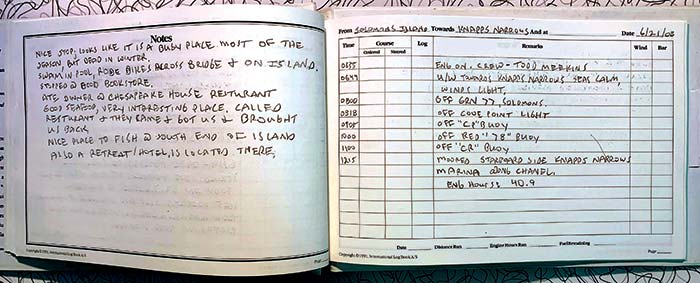
Why Keep One?
Keeping a ship's log is a maritime tradition that has been around for centuries, one also required by law in some cases (such as with commercial or military vessels). The logbook is a running account of all official events pertaining to the vessel, from departure and arrival to the number of crewmembers onboard. Although there's no legal requirement for typical recreational vessels to have a ship's log, every boat owner should strongly consider keeping one to enjoy the benefits it provides (i.e., a centralized document that notes the daily occurrences and requirements of the vessel).
Notice a frayed line that needs replacing or that the life raft is due for inspection? Note it in the logbook as a reminder.
On the flipside, a log book can also be used to record fun or interesting things from your trip, from information on new friends made to favorite anchorages, the best rib joint within walking distance of the marina, or that recipe for spam musubi you brought to the rake-n-scrape.
While a ship's log can be a fun way to document a trip for future armchair reading, the primary purpose of a log is to help you organize and operate your boat safely. Another key reason is for navigational purposes.
Logbook entries underway are typically made every hour on the hour and include navigational information such as a vessel's speed, heading, direction, and position. This may seem quaint in today's world of instant electronic navigation, but in the event of chartplotter failure or a loss of GPS signal, this info would be crucial in plotting a course to safety.
Types Of Logbook Entries
During a trip or voyage, a ship's log should be kept when moored, underway, and while at anchor. Start your log with the time you cast off, and end with the time you reached your destination, as well as any notable events in between:
0700: Underway from Hospital Point Anchorage, Portsmouth, Va., en route the Dismal Swamp Canal Welcome Center, South Mills, N.C.
1100: Leave ICW, enter Dismal Swamp Canal
1600: Moored portside to Dismal Swamp Canal Welcome Center dock
If kept on paper and the goal is to keep a log that will best serve as a legal document should the need arise, use a fixed book with numbered pages (so that pages cannot be removed). Entry errors must be crossed out with a single line (no whiteout, scribbles, or erasures), and initialed by the person making the correction. This is so the correction can still be read should someone have questions about it. The correct entry would then be entered above or adjacent to the correction.
The following are types of information that should be included in a ships log:
- Vessel name
- Departure port and destination
- Engine hours (departure and arrival)
- Generator hours if applicable
- Number of persons on board
- Time of each log entry
- Position (e.g., GPS, proximity to local landmark, navigational aid)
- Compass heading (note magnetic or true)
- Weather and sea state
- Wind speed and direction
- Special instructions (such as wake the captain if the wind speed increases above a certain limit or when other vessels are sighted)
- Interactions with other vessels or entities — particularly those involving safety or vessels in distress. Include a description of the event or communication (and all follow up communications), as well as times, dates, vessel position and any actions taken
- Useful info such as good anchorages, stopping points and what they offer (fuel, food, pet areas), navigational hazards, tide, and weather forecasts
Tips For Keeping A Great Log
- The captain is responsible for the logbook and for ensuring its proper use.
- Unless otherwise designated, only the captain should make log entries. Entries by authorized persons must not be amended or deleted unless directed by the captain.
- Make routine entries every hour on the hour.
- Entries that document an event of interest should be made as soon as practical after the event occurs (while the details are still fresh in everyone's mind). For significant events, in addition to describing the event and noting basic information (time, date, position), also list the names of passengers or crew that witnessed or were involved in the event and have them sign the logbook entry once completed.
Related Articles
The truth about ceramic coatings for boats.
Our editor investigates the marketing claims of consumer-grade ceramic coatings.
Fine-Tune Your Side Scan Fishfinder
Take your side-scanning fishfinder off auto mode, and you’ll be spotting your prey from afar in no time
DIY Boat Foam Decking
Closed-cell foam flooring helps make boating more comfortable. Here’s how to install it on your vessel
Click to explore related articles
Frank Lanier
Contributing Editor, BoatUS Magazine
Capt. Frank Lanier is a SAMS Accredited Marine Surveyor with more than 40 years of experience in the marine and diving industries. He’s also an author, public speaker, and multiple award-winning journalist whose articles on boat maintenance, repair, and seamanship appear regularly in numerous marine publications worldwide. He can be reached via his YouTube channel “Everything Boats with Capt. Frank Lanier” and website captfklanier.com.
Audio tour Ethnographic Park of the history of the Chusovaya river
Download the free izi.TRAVEL app
- Download on the App Store
- Android app on Google play
- Download from Windows phone store

Create your own audio tours!
Use of the system and the mobile guide app is free


Download the free Kindle app and start reading Kindle books instantly on your smartphone, tablet, or computer - no Kindle device required .
Read instantly on your browser with Kindle for Web.
Using your mobile phone camera - scan the code below and download the Kindle app.

Image Unavailable

- To view this video download Flash Player
Old Wooden Sculpture of Perm Hardcover – January 1, 1985
- Print length 158 pages
- Language Russian
- Publisher Premise Knizhnoe Izd
- Publication date January 1, 1985
- Dimensions 12.9 x 9.7 x 0.7 inches
- See all details

Product details
- ASIN : B000BUN6W8
- Publisher : Premise Knizhnoe Izd (January 1, 1985)
- Language : Russian
- Hardcover : 158 pages
- Item Weight : 2.65 pounds
- Dimensions : 12.9 x 9.7 x 0.7 inches
Customer reviews
Customer Reviews, including Product Star Ratings help customers to learn more about the product and decide whether it is the right product for them.
To calculate the overall star rating and percentage breakdown by star, we don’t use a simple average. Instead, our system considers things like how recent a review is and if the reviewer bought the item on Amazon. It also analyzed reviews to verify trustworthiness.
No customer reviews
- Amazon Newsletter
- About Amazon
- Accessibility
- Sustainability
- Press Center
- Investor Relations
- Amazon Devices
- Amazon Science
- Start Selling with Amazon
- Sell apps on Amazon
- Supply to Amazon
- Protect & Build Your Brand
- Become an Affiliate
- Become a Delivery Driver
- Start a Package Delivery Business
- Advertise Your Products
- Self-Publish with Us
- Host an Amazon Hub
- › See More Ways to Make Money
- Amazon Visa
- Amazon Store Card
- Amazon Secured Card
- Amazon Business Card
- Shop with Points
- Credit Card Marketplace
- Reload Your Balance
- Amazon Currency Converter
- Your Account
- Your Orders
- Shipping Rates & Policies
- Amazon Prime
- Returns & Replacements
- Manage Your Content and Devices
- Recalls and Product Safety Alerts
- Conditions of Use
- Privacy Notice
- Consumer Health Data Privacy Disclosure
- Your Ads Privacy Choices

IMAGES
VIDEO
COMMENTS
The definitive guide from the world's best-known sailboat maintenance expert. Don Casey's Complete Illustrated Sailboat Maintenance Manual combines six core volumes into a single, utterly dependable resource that answers every frequent question, explains every major system, and helps you keep your boat and its components shipshape.. More than 2,500 clear and detailed illustrations guide you ...
Combining six books into one saves five covers and about an inch of bookcase space. Totaling 880 pages, these books cover much of the typical maintenance and repair on a boat (actually, any boat, not just a sailboat). If you have a real fixer-upper, however, his This Old Boat will provide far more information on a total restoration project.
The definitive guide from the world's best-known sailboat maintenance expert Don Casey's Complete Illustrated Sailboat Maintenance Manual combines six core volumes into a single, utterly dependable resource that answers every frequent question, explains every major system, and helps you keep your boat and its components shipshape.
The definitive guide from the world's best-known sailboat maintenance expert Don Casey's Complete Illustrated Sailboat Maintenance Manual combines six core volumes into a single, utterly dependable resource that answers every frequent question, explains every major system, and helps you keep your boat and its components shipshape.
The definitive guide from the world's best-known sailboat maintenance expert. Don Casey's Complete Illustrated Sailboat Maintenance Manual combines six core volumes into a single, utterly dependable resource that answers every frequent question, explains every major system, and helps you keep your boat and its components shipshape.. More than 2,500 clear and detailed illustrations guide you ...
This is really six books in one. Five of them represent Don Casey's considerable expertise in inspecting, maintaining and enhancing the mechanical and electrical systems of a sailboat. The sixth, a 160-page book on troubleshooting marine diesels by Peter Compton, was added for completeness. All in all, it makes a great addition to any sailor ...
The definitive guide from the world's best-known sailboat maintenance expert. Don Casey's Complete Illustrated Sailboat Maintenance Manual combines six core volumes into a single, utterly dependable resource that answers every frequent question, explains every major system, and helps you keep your boat and its components shipshape.. More than 2,500 clear and detailed illustrations guide you ...
You'll find highly respected books on racing, cruising and sailboat maintenance for your next adventure on the open seas! 1. Chapman Piloting & Seamanship 69th Edition. One of the best sailing books available, the Chapman Piloting & Seamanship 69th Edition is a comprehensive book with descriptions, illustrations, and pictures for every situation.
Clean the thru-hull. Clean the siphon break. Fill up coolant and antifreeze if needed. Check pump, impeller, and raw water strainer. Finally, let's see the annual maintenance of your sailboat's engine: Test the batteries. Check the diesel tank for damages. Inspect the shaft and propeller.
The definitive guide from the world's best-known sailboat maintenance expert. Don Casey's Complete Illustrated Sailboat Maintenance Manual combines six core volumes into a single, utterly dependable resource that answers every frequent question, explains every major system, and helps you keep your boat and its components shipshape.. More than 2,500 clear and detailed illustrations guide you ...
Best for Experts: Boat Owners Mechanical and Electrical Manual (Fourth Edition) Shop Now . Best for Solo Sailors: Stress-free Sailing: Single and Short-handed Techniques Shop Now . Best for Beginners: Sailing Fundamentals Shop Now . Most detailed: Don Casey's Complete Illustrated Sailboat Maintenance Manual Shop Now .
The definitive guide from the world's best-known sailboat maintenance expert. Don Casey's Complete Illustrated Sailboat Maintenance Manual combines six core volumes into a single, utterly dependable resource that answers every frequent question, explains every major system, and helps you keep your boat and its components shipshape.. More than 2,500 clear and detailed illustrations guide you ...
7 - 'The Annapolis Book of Seamanship' by John Rousmaniere. This book, hailed as a "sailing bible" among the sailing community, covers all aspects of seamanship, including navigation, gear maintenance, electronic, pleasure cruising, and heavy-weather sailing. It is straightforward and is a valuable book to keep on board.
1100: Leave ICW, enter Dismal Swamp Canal. 1600: Moored portside to Dismal Swamp Canal Welcome Center dock. If kept on paper and the goal is to keep a log that will best serve as a legal document should the need arise, use a fixed book with numbered pages (so that pages cannot be removed).
rod o: Wikipedia. Strony: 36. Rozdzia y: Dewon, Kambr, Karbon, Ordowik, Perm, Sylur, Zwierz ta ery paleozoicznej, Antrakozaury, Paleozoik, Tropy rodkowodewo skich ...
The ethnographic complex 'The Museum of the History of the Chusovaya River' is located in the town of Chusovoy, 135 kilometers east of the city of Perm. You can easily reach Chusovoy by car, bus or train. The museum is located on the eastern outskirts of Chusovoy (you need to go along the mining route).
Select the department you want to search in ...
Delivering to Lebanon 66952 Choose location for most accurate options Books. Select the department you want to search in